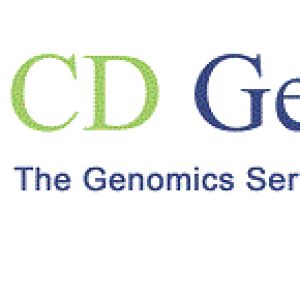What Can We Do with NGS for Oncology?Posted by kiko on July 21st, 2022 What is gene sequencing? Gene sequencing is a type of genomic testing technology. PCR, fluorescence in situ hybridization (FISH) and microarray technologies are mainly used to investigate the presence or absence of specific fragment sequences through known genes, which focuses on the detection of known mutations. Gene sequencing technology, on the other hand, involves measuring the nucleotides in the gene sequence one by one, focusing on obtaining the whole or target genome sequence. Gene sequencing currently has mainly one Sanger sequencing, next generation sequencing (NGS), long read sequencing (single-molecule real-time sequencing) and so on. The most widely used one is NGS. Due to the high accuracy and throughput of NGS, the prospects of applications are increasing. These include scientific research, agricultural applications, environmental pollution monitoring, etc. One of the most popular is the use of gene sequencing to study the processes and drug resistance of genetic diseases, chronic diseases, infectious diseases, tumors and other diseases, which helps to advance the development of precision medicine. Current application of cancer NGS First, cancer cells are different from normal cells in many ways, the most prominent of which is that many cancer cells have genetic mutations, including gene deletion, gene fusion, gene rearrangement and so on. In addition, the genes of tumor cells are constantly mutated, and the genome detected in each period may change, so it is still very difficult to analyze the genetic mutations of tumors. The use of gene sequencing is currently the most common means of tumor mutation detection. The two main types of NGS for tumors are: one is solid tumors panel sequencing, and the other is liquid biopsy of peripheral blood or urine. Targeted panel sequencing is a next-generation sequencing analysis based on amplicon or hybridization-based technology that allows rapid and efficient detection of low-input DNA and RNA (20 ng) and is compatible with formalin-fixed, paraffin-embedded (FFPE) and frozen tissues. Tens or hundreds of targets of cancer susceptibility, hotspots, cancer suppressor genes, etc. are typically covered. Circulating tumor DNA (ctDNA) is part of liquid biopsy, which also includes circulating tumor cells (CTC) and exosome analysis. Depending on the disease, samples from one or more sources can be selected that can provide comprehensive information on the genetic profile, mutational load and immune status of the tumor. For example, tumor tissue samples can provide information on tumor mutation profiles and gene expression. And ctDNA samples can be an important supplement to tissues because of the heterogeneity among and within lesions, which can compensate for the missing information of tissues to a certain extent. Peripheral blood contains T cells. The monitoring of T cell composition in peripheral blood after transfusion is even more important for cellular immunotherapy. The challenges of cancer NGS The whole process of cancer gene sequencing service actually includes sample processing (extraction, library construction and capture), sequencing, data processing, annotation, interpretation and problem-solving. Therefore, not only the sequencing process but also the analysis of genetic mutations in tumors requires researchers to have in-depth studies in medicine, bioinformatics and genetics. The DNA raw data needs to be compared with the genome and filtered to obtain information on genomic variants. Genetic data analysis and interpretation are also a key part of the cancer genome sequencing service. Because the knowledge of tumors is still in progress, this part of the work is still somewhat exploratory and requires certain research and analysis ability to discover new mutations and potential drug targets, in addition to the established knowledge. Like it? Share it!More by this author |


